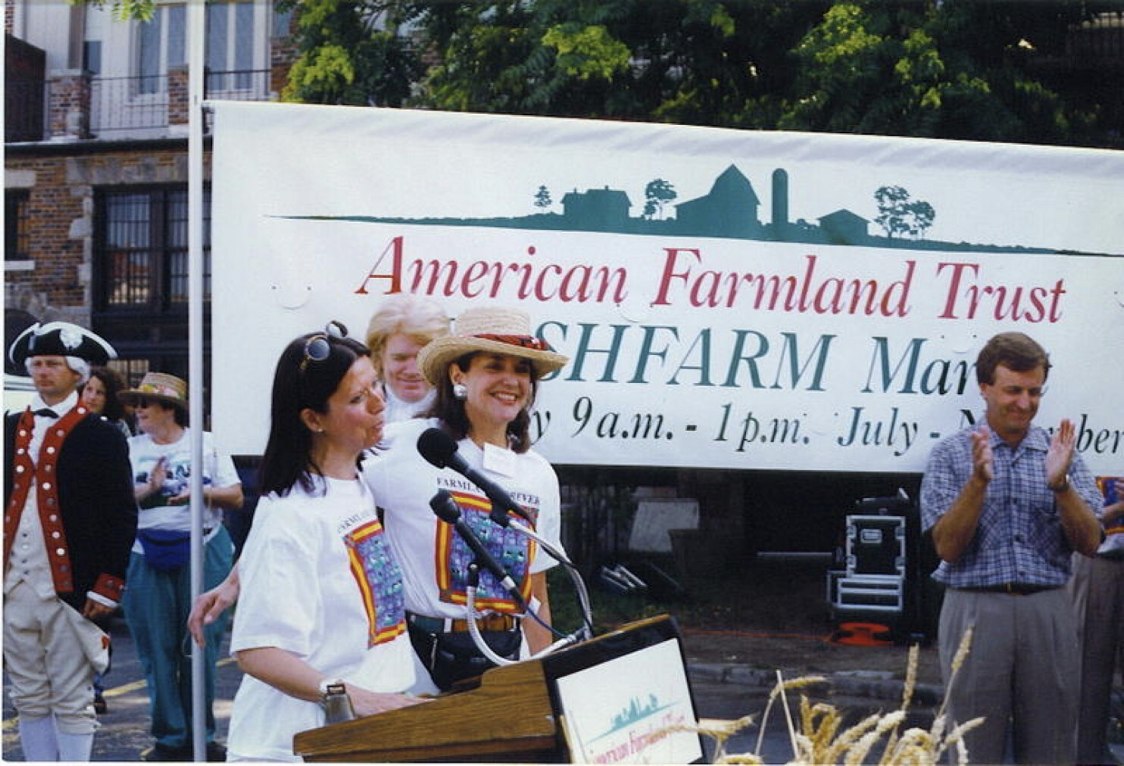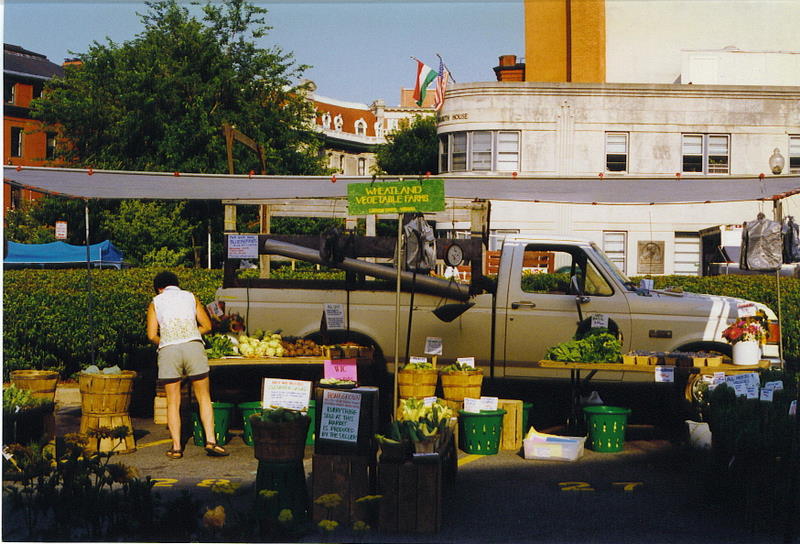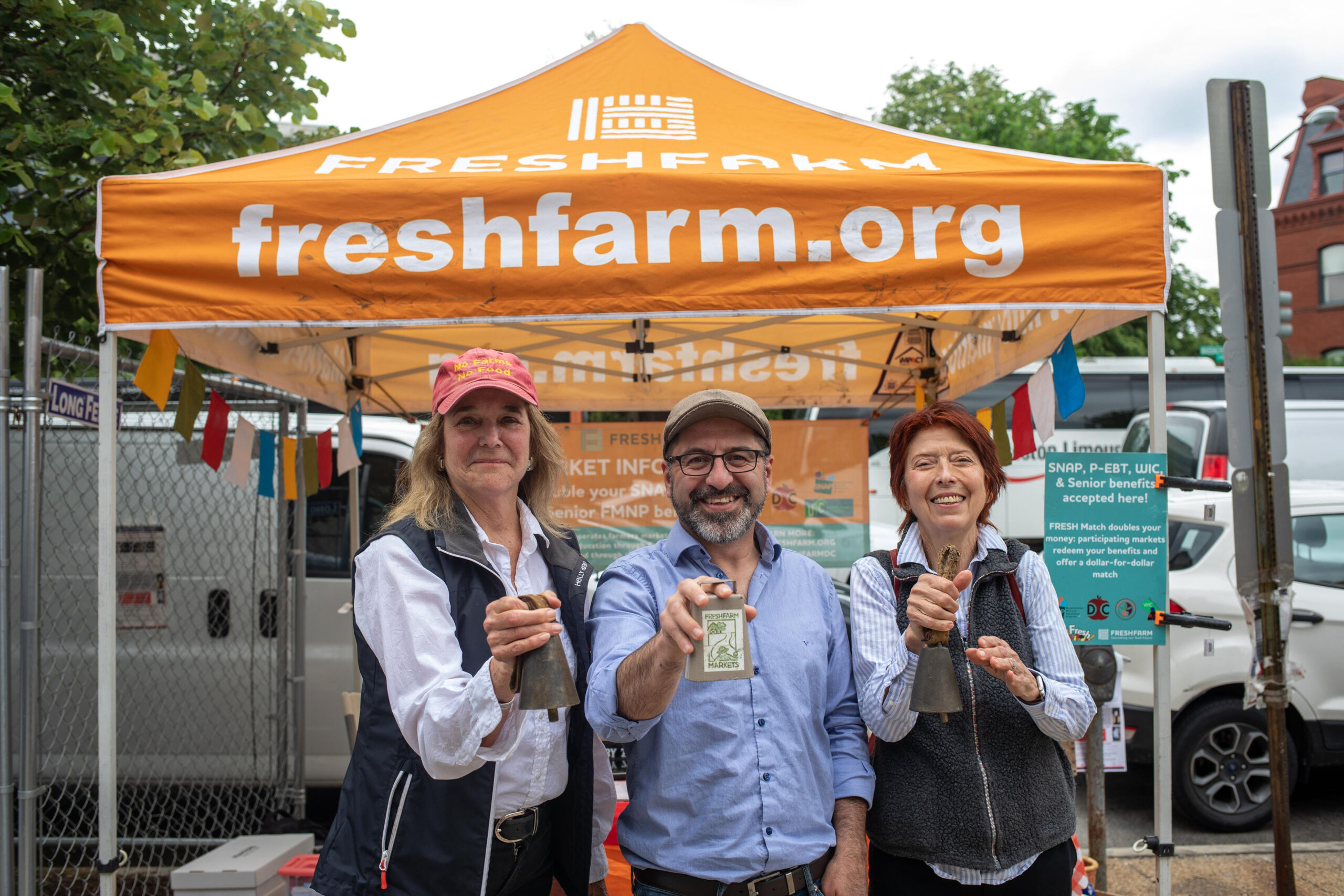Rise in farmers markets feeds sense of community
The number of farmers markets has surged over the last 25 years—making the markets and the farmers who sell at them an indispensable part of our food system.

Summer may be the most exciting season for growing and buying food. Farmers market tables overflow with ripe produce bursting with vibrant color and flavor. The beauty and variety of the produce, coupled with stroll-friendly weather, make summer the most well-attended season for most markets. Summer is also the perfect time to attract new customers to a form of grocery shopping that supports local producers and brings community-members into close contact with the hardworking farmers and ranchers who grow their food
Much of this was on the minds of Bernadine Prince and Ann Harvey Yonkers when they opened the FRESHFARM Dupont Circle farmers market in Washington, D.C., in the summer of 1997. Prince was on the staff of American Farmland Trust (AFT) when she and Yonkers met and began working to create the first producers-only farmers market in the district. The market structure ensures that vendors can only sell goods that they have grown or produced themselves, which results in fair prices for the public and farmers.
With AFT as the initial sponsor, the Dupont Circle market opened and has been a community hub and consistent source of local food for D.C. residents for 25 years. Under the leadership of Harvey and Yonkers, that single market expanded into a network of nearly 30 thriving markets across Virginia, Maryland, and D.C., now operated by the non-profit organization FRESHFARM.
Prince noted the lack of precedent for this kind of market in D.C. at the time. “We wanted Mid-Atlantic farmers to have an outlet to sell directly to the public in the D.C.-metro area. There were a few other markets, but for the most part there was nothing like a producer-only farmers market,” she told FRESHFARM in an interview.

“When you met the farmers, you started to realize how vitally important it was to start something like the Dupont Circle market to make sure they could survive economically. You can save the farmland, but you have to keep the farmer on the land. Staying on the land means keeping farming economically viable,” she added.
The creation of the Dupont Circle market and the evolution of FRESHFARM coincided with a national upward trend of farmers market openings. Although farmers had been selling their goods at public markets for centuries in the U.S., many of these markets were closed in the mid-20th century to make room for large scale retail stores. But in the 1970s and ‘80s, farmers markets began reappearing as communities across the country grew hungry for the many benefits of local food. Between 1960 and 2000, farmers markets blossomed from around 100 to over 3,000 markets nationwide. Today, there are more than 8,600 registered markets in the U.S.
In recent years, this surge of farmers markets has been consequential. When the COVID-19 pandemic disrupted global supply chains and caused food shortages at large chain grocery stores, farmers markets stepped in to fill the gaps. The smaller size and local management of most markets enabled them to respond nimbly and vigorously to the crisis. In fact, many markets had their busiest year on record in 2020.
But the success and survival of these markets, especially in times of crises, does not come without an immense amount of hard work from both vendors and operators. Hugo Mogollon, the current executive director of FRESHFARM, recalls that it was an uphill battle to get the market declared an “essential business” in order to remain open during the pandemic.

“For years, farmers markets were overlooked as the indispensable piece of the food system they are, and instead, they have been seen as social gatherings,” says Mogollon. And while there are more social opportunities at most farmers markets than at chain grocery stores, markets are much more than simply a meet-up spot.
Throughout the COVID-19 crisis, many markets shouldered the burden of implementing additional safety measures, which were often demanding and expensive. “By the end of 2021, FRESHFARM expenses for personnel soared by 60% compared with 2019, and our expenses for equipment, signage, and personal protective equipment grew by 240%,” says Mogollon. Despite the pressure, FRESHFARM’s responsibility for providing access to local, nutritious food and revenue for small- to mid-sized farms more than justified the fight to remain open.
Mogollon hopes that citizens who turned to farmers markets in times of crisis will remember the importance of maintaining a robust local food supply and prioritize supporting the farmers who make it possible. “That is the best thing they could do to keep building strong regional food systems—ones that are less vulnerable to disruptions and that benefits farmers, eaters, and our environment,” says Mogollon.
Returning to the status quo would be an unpalatable option.

